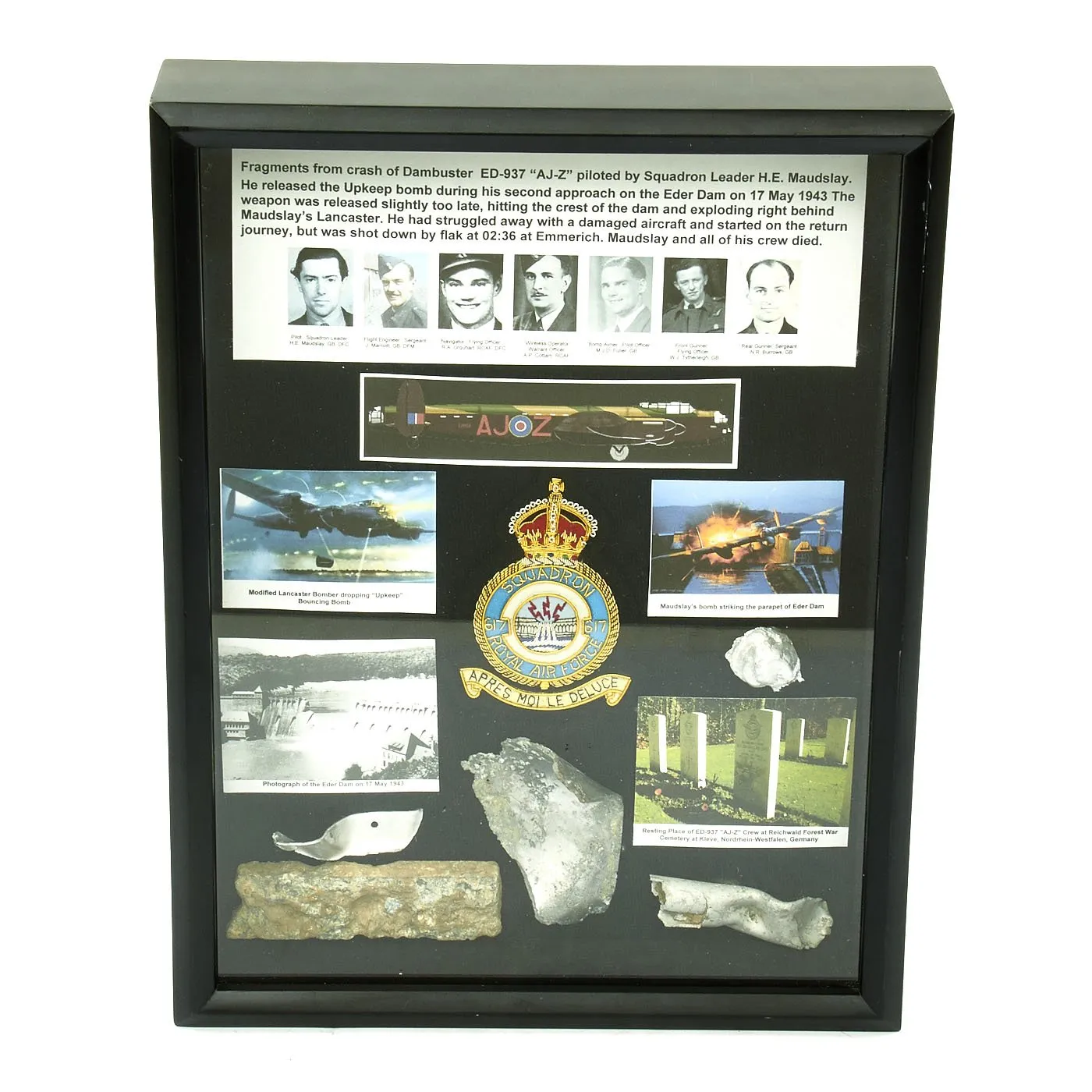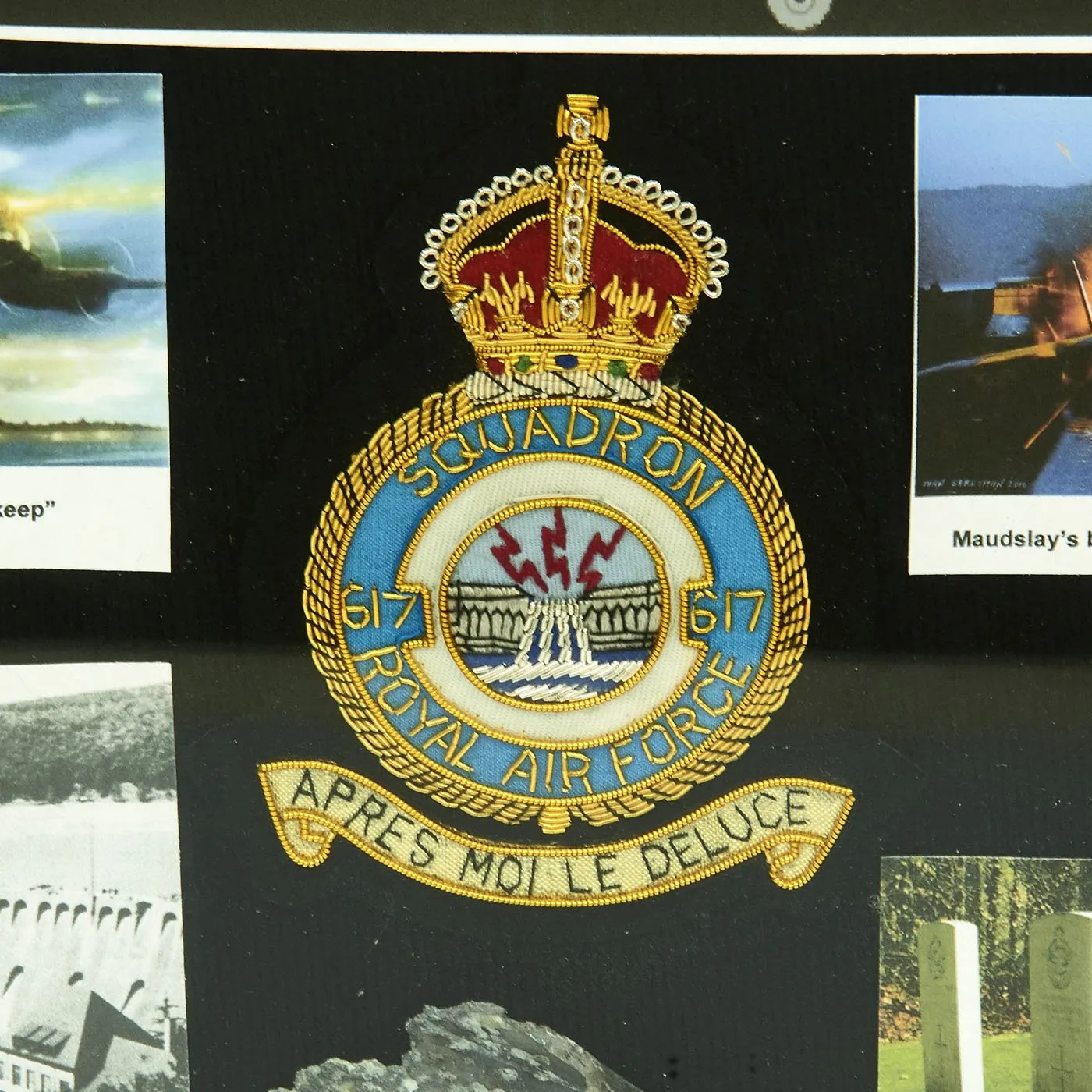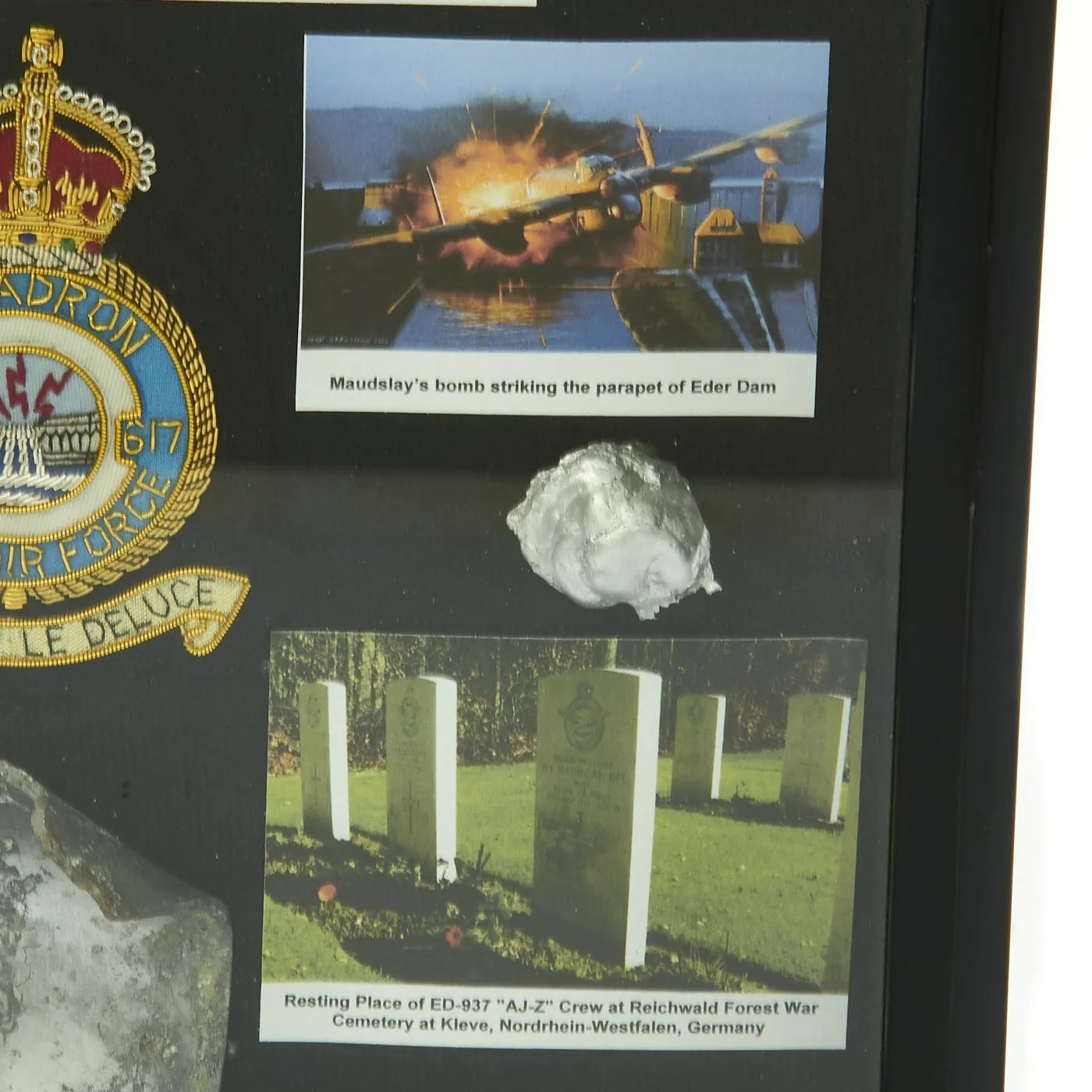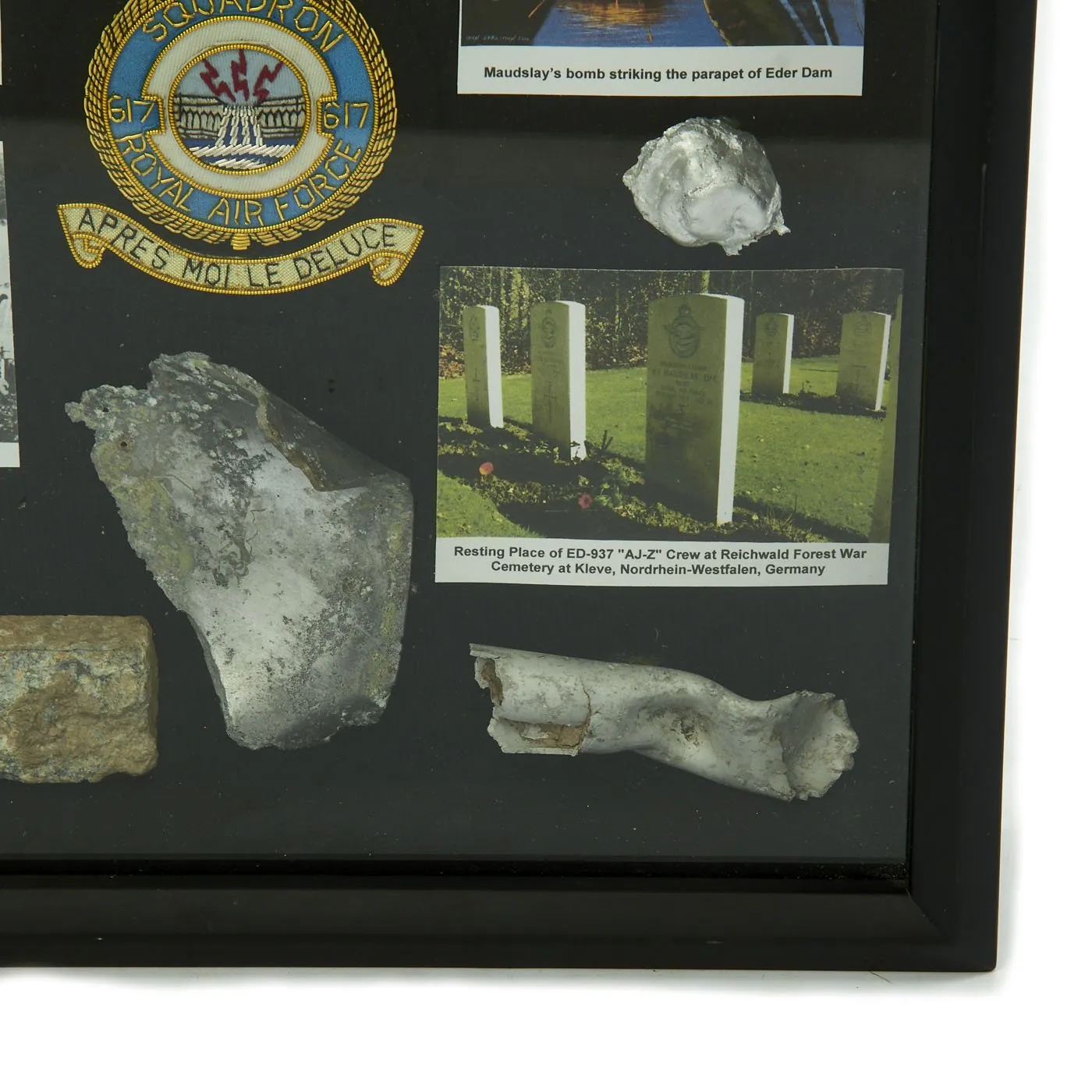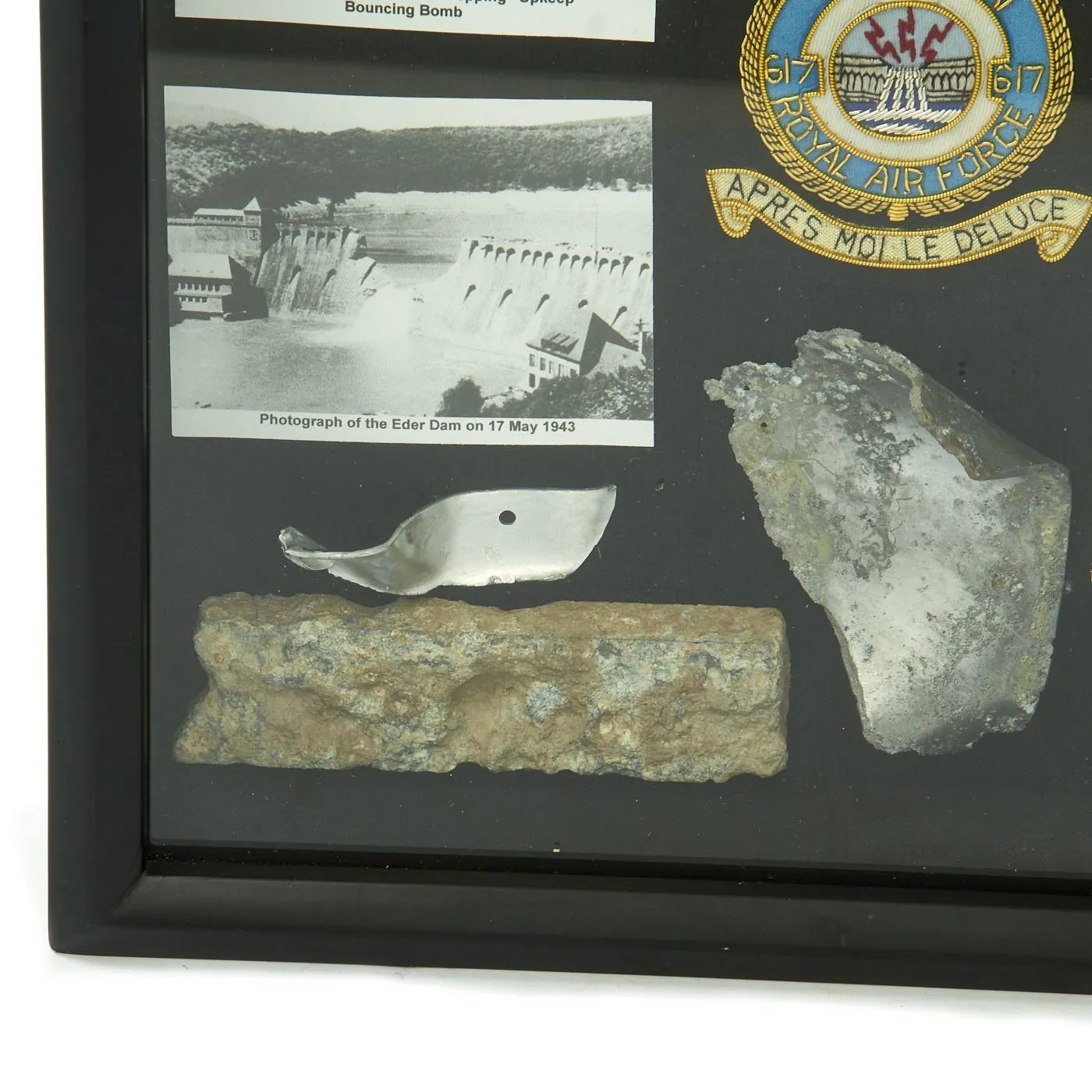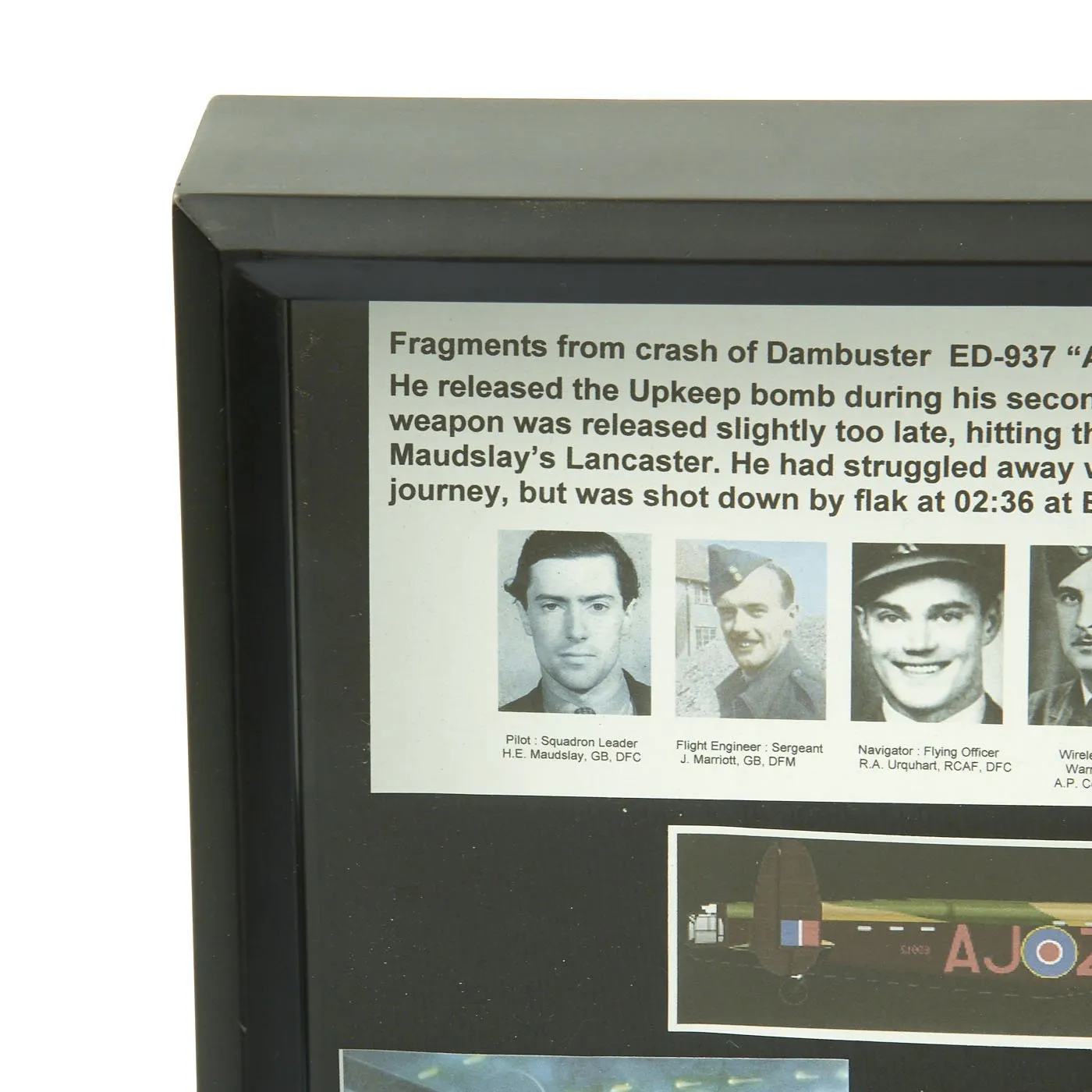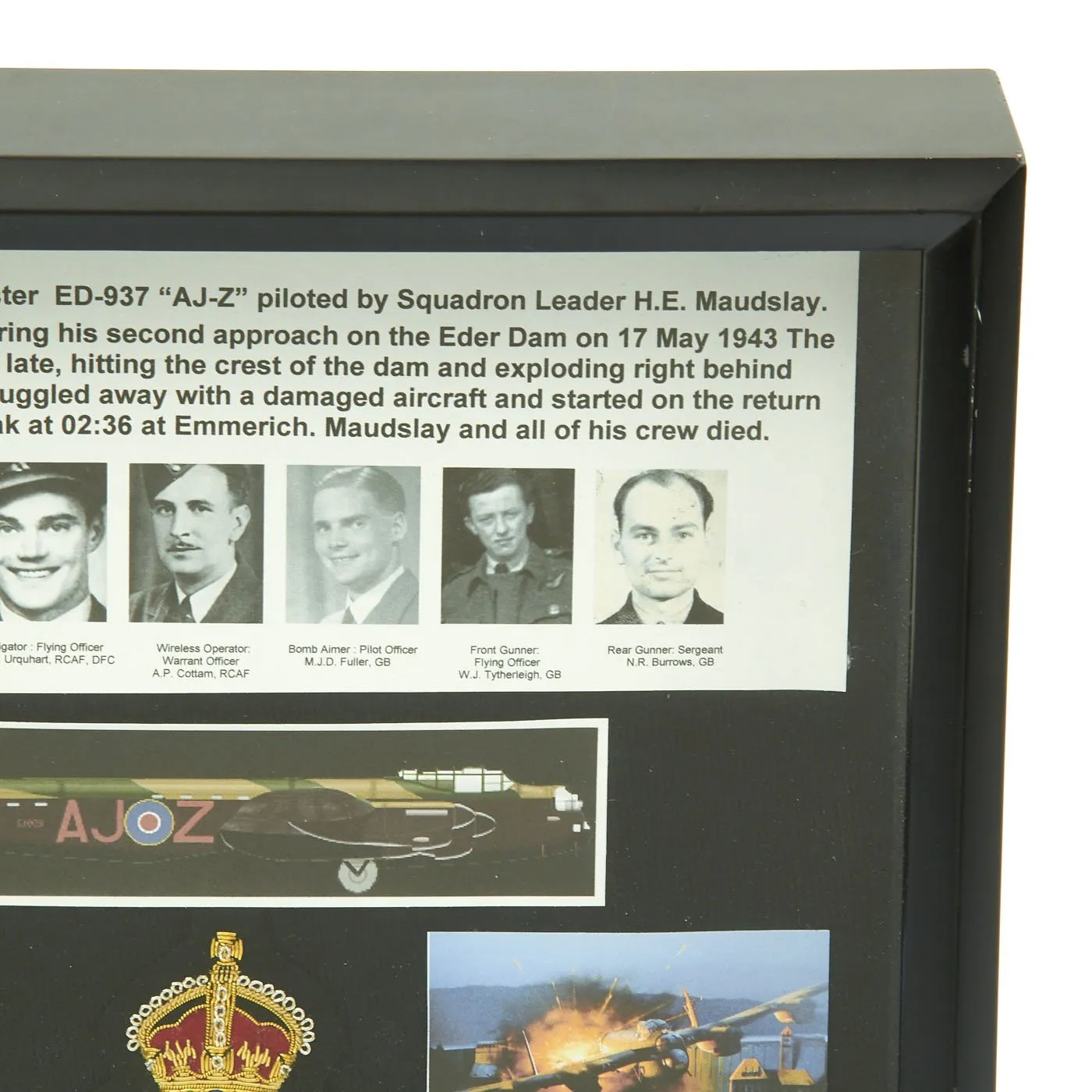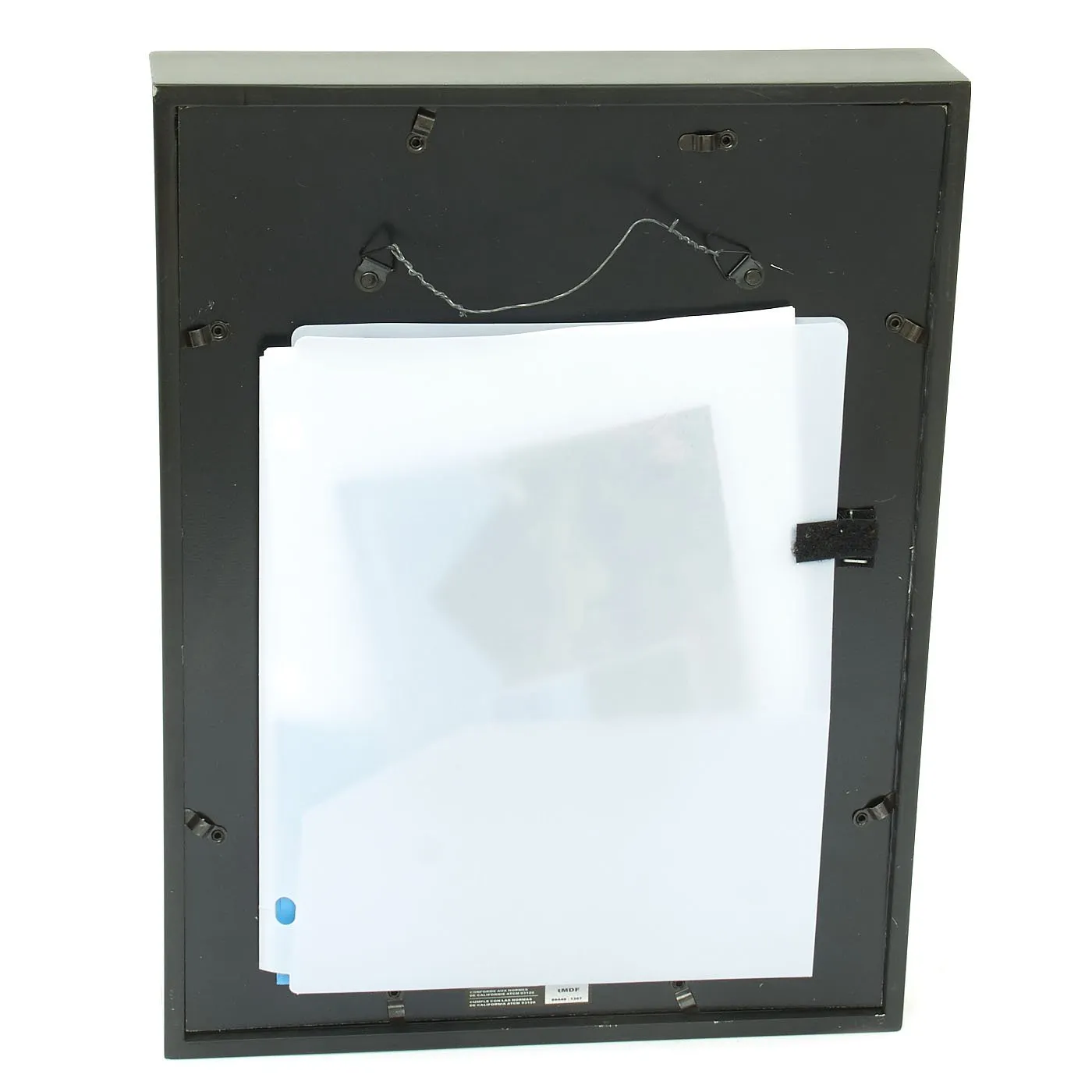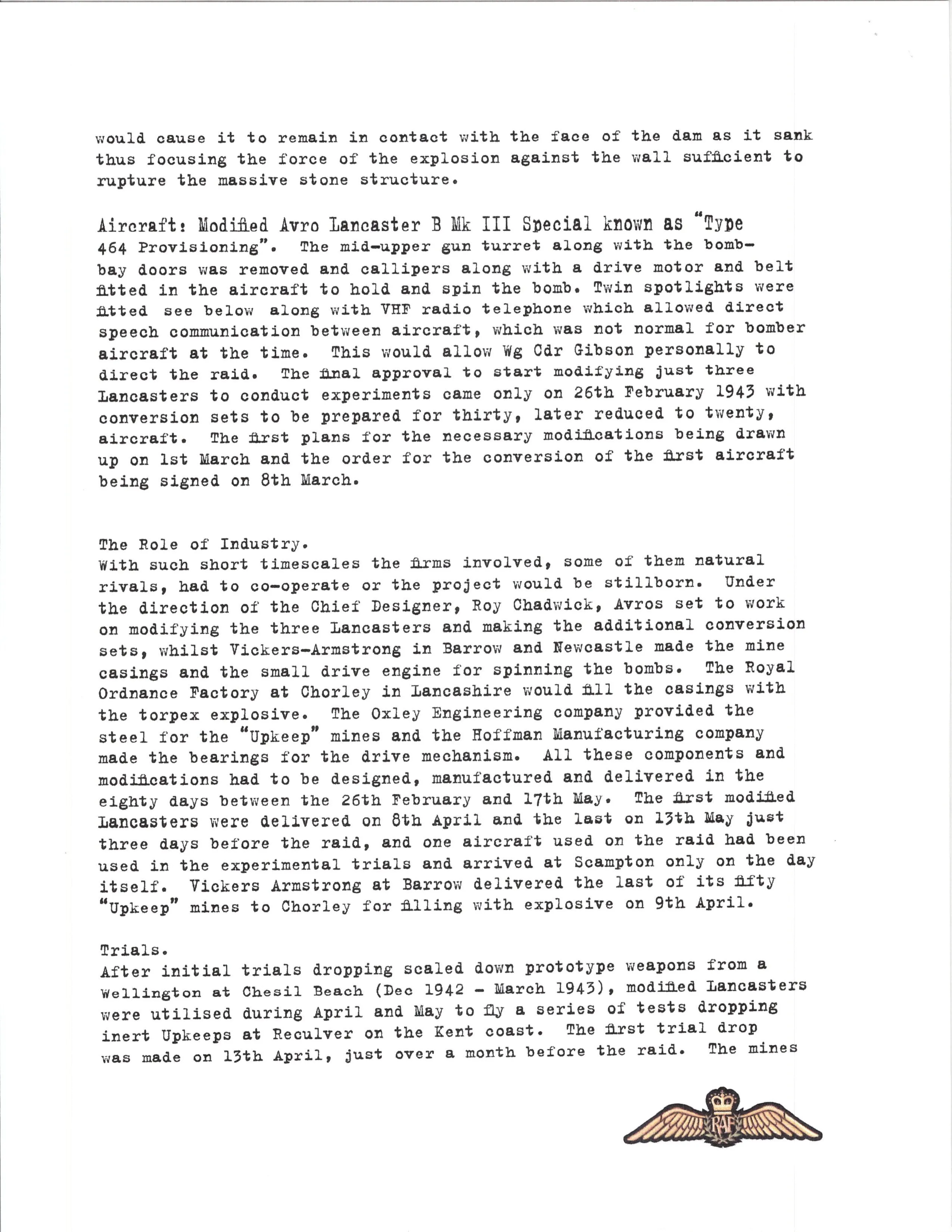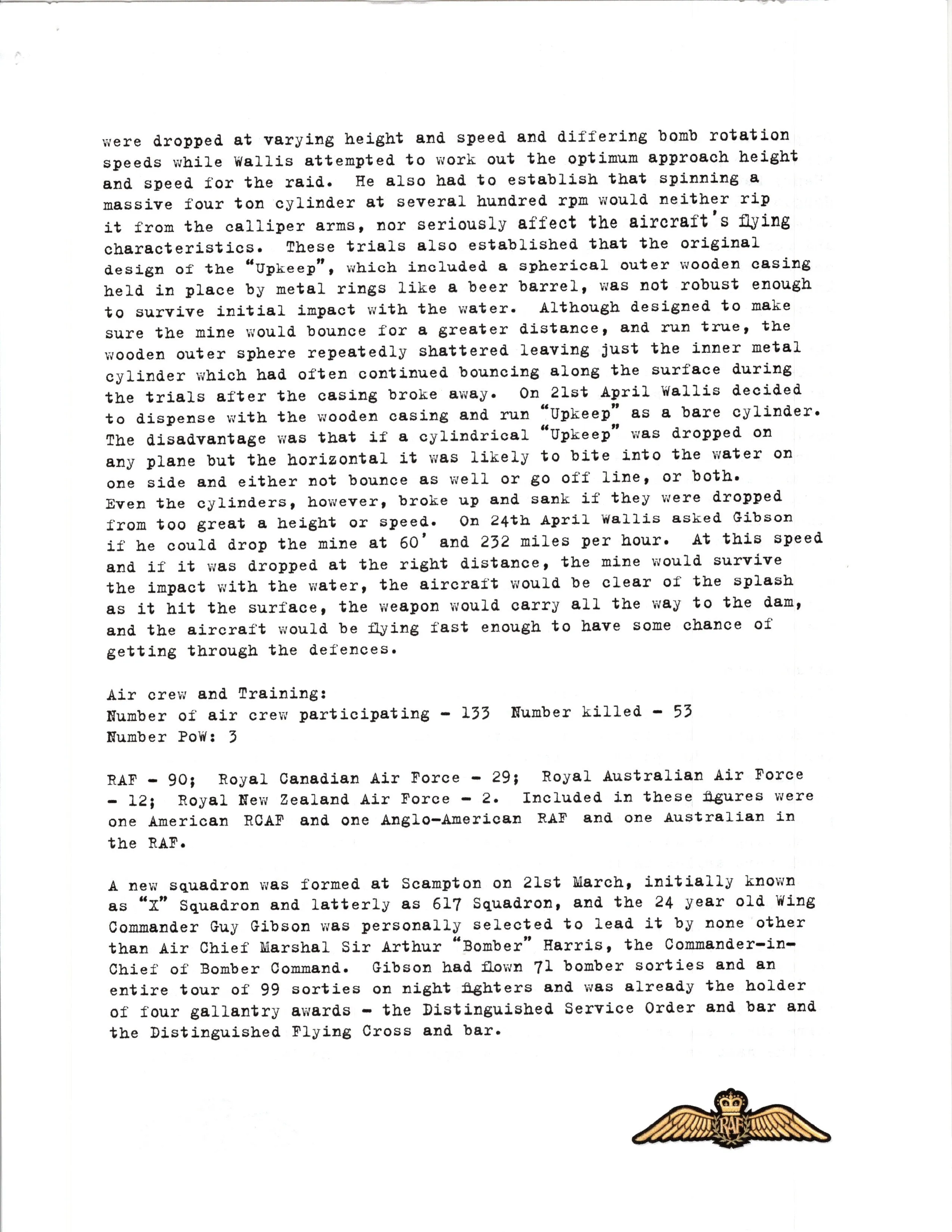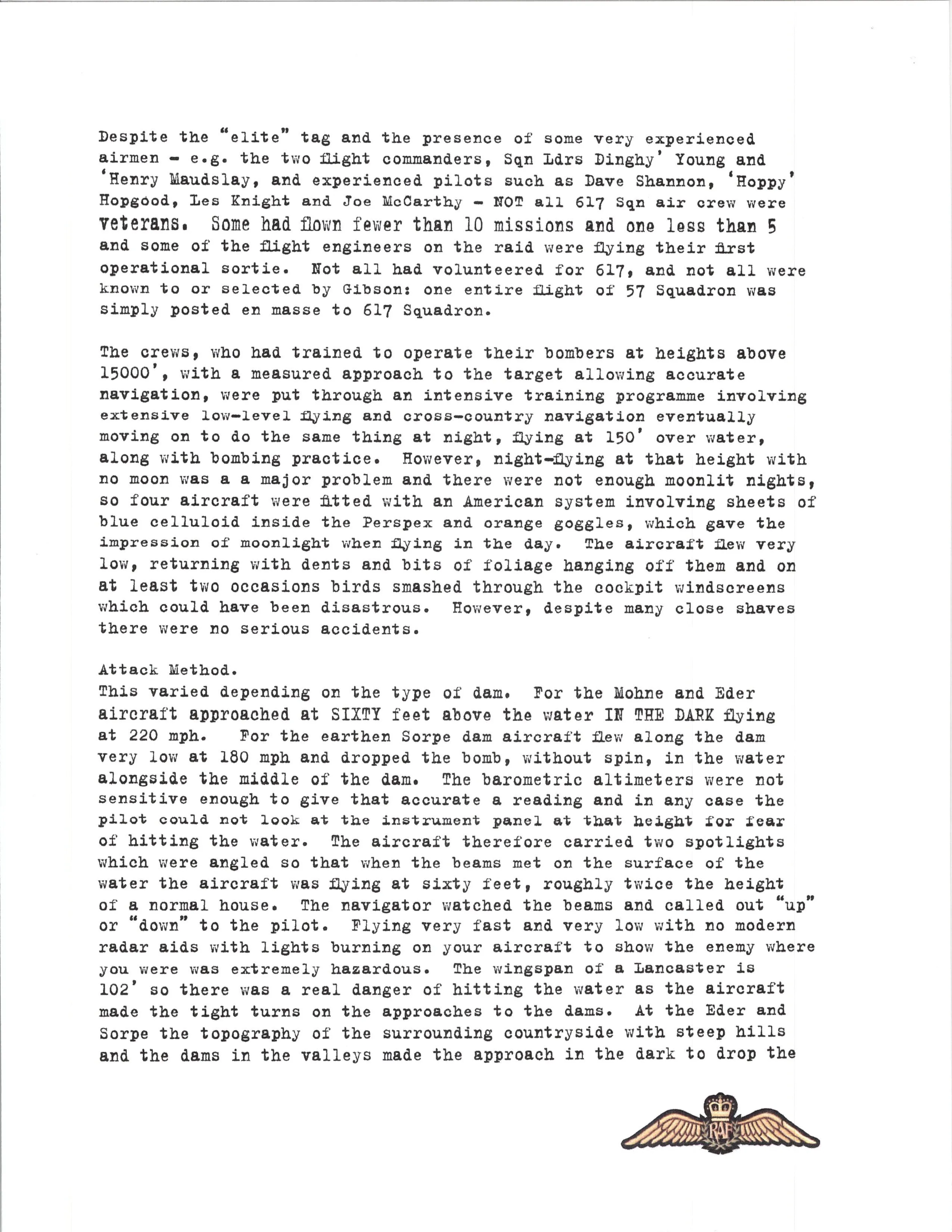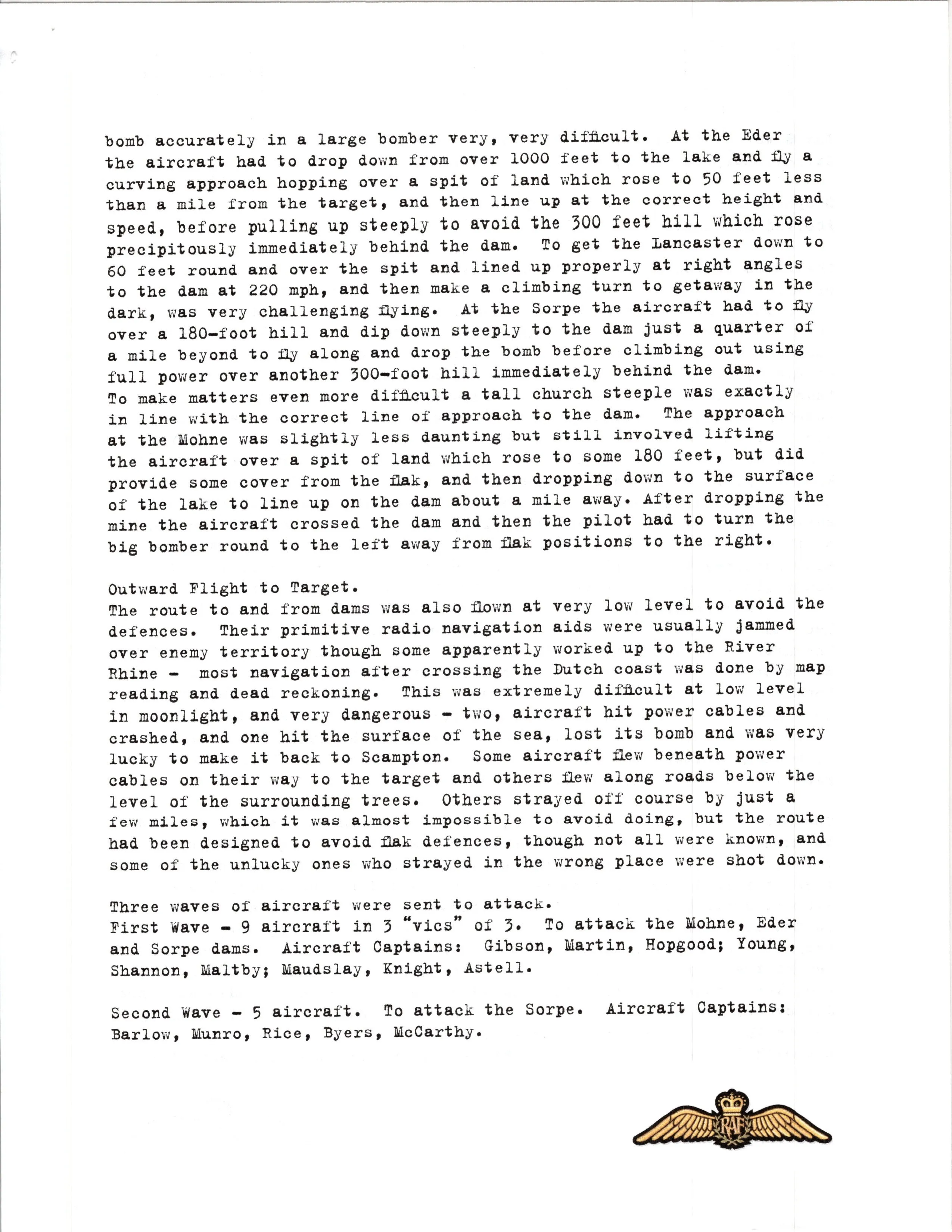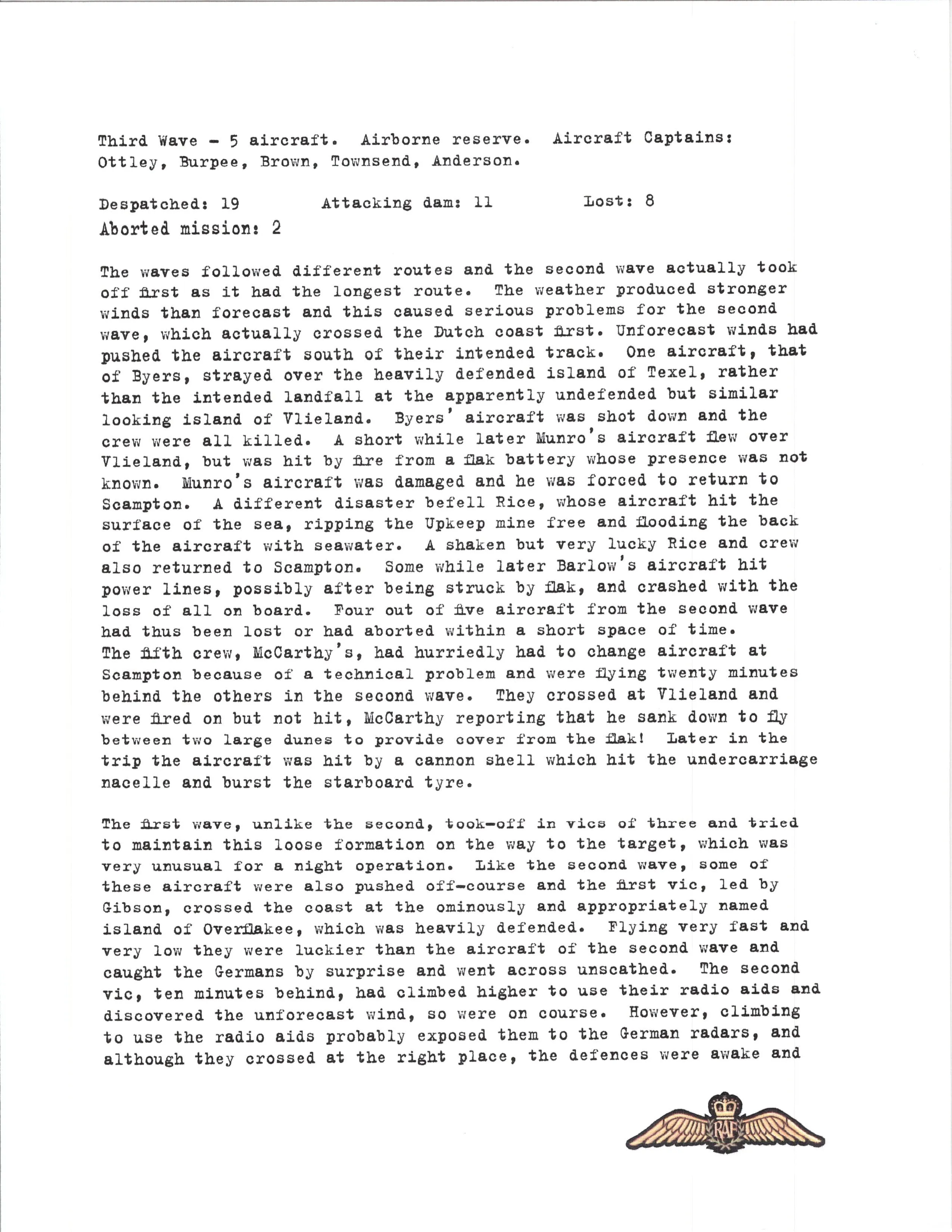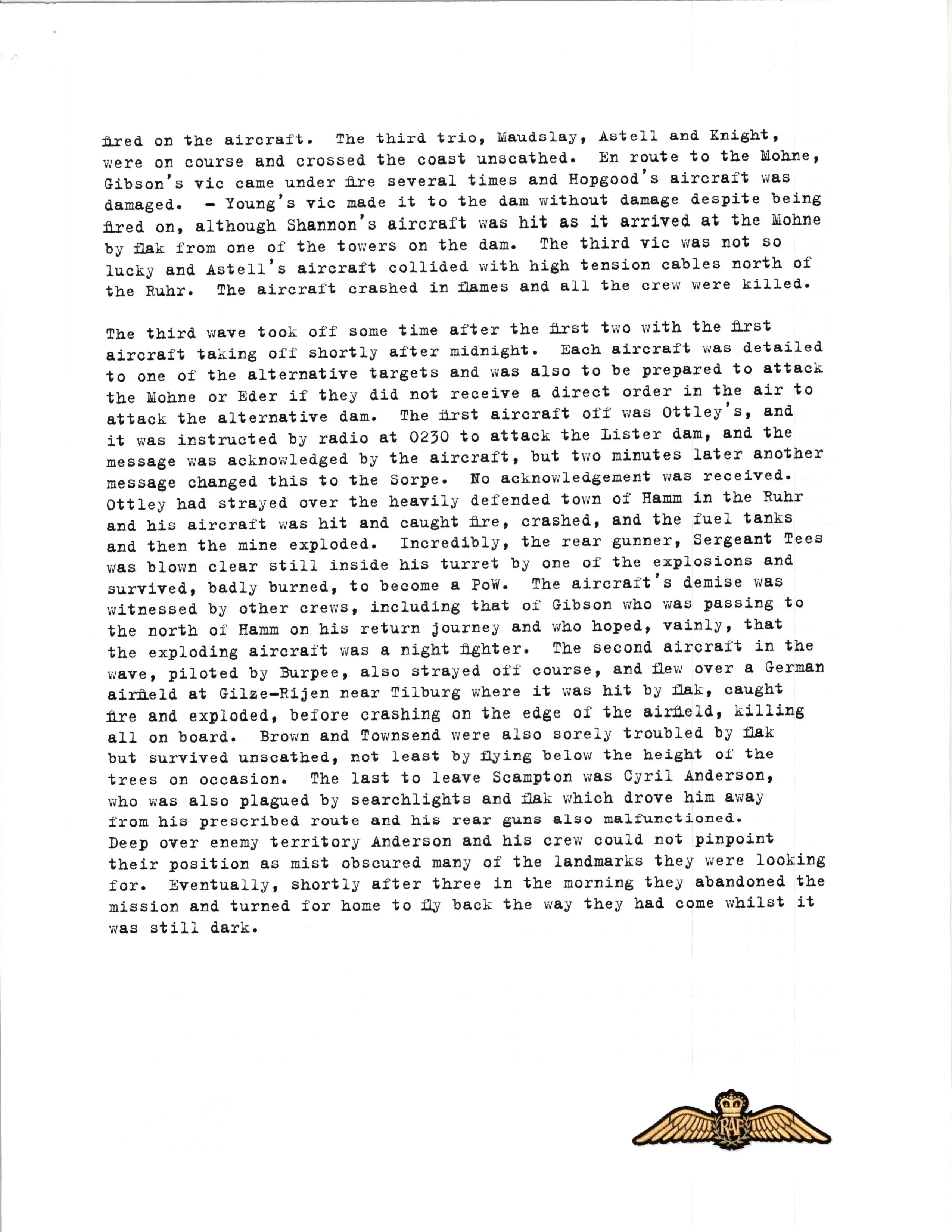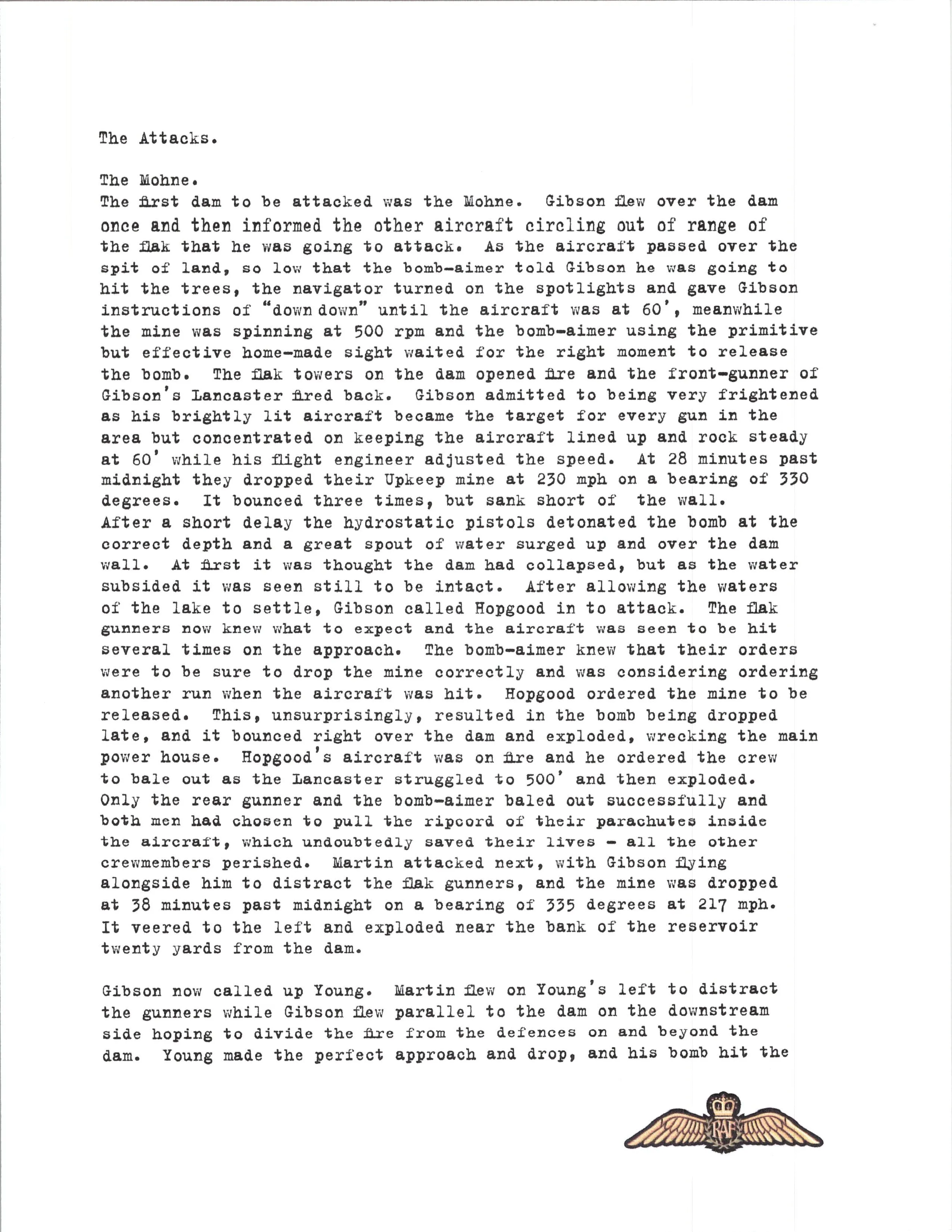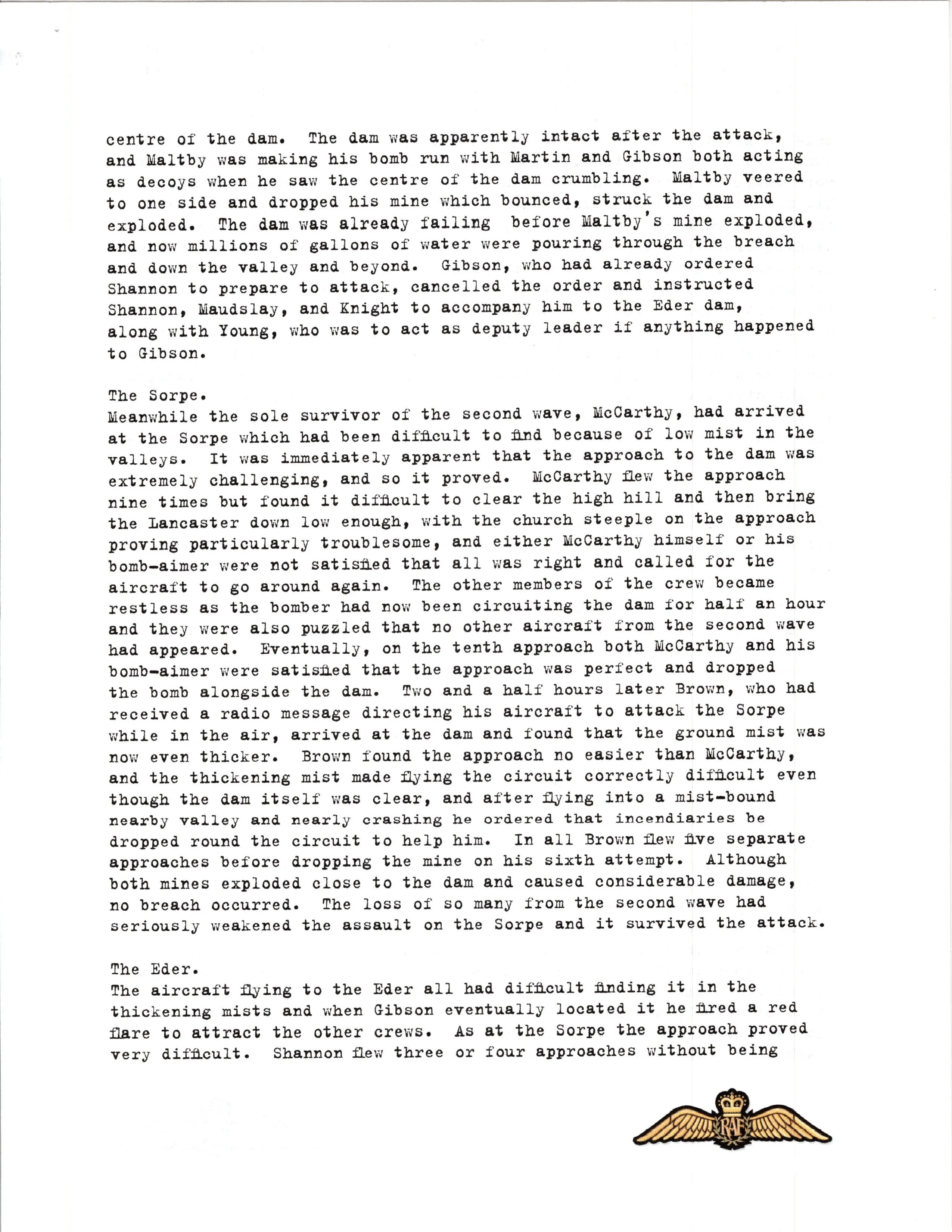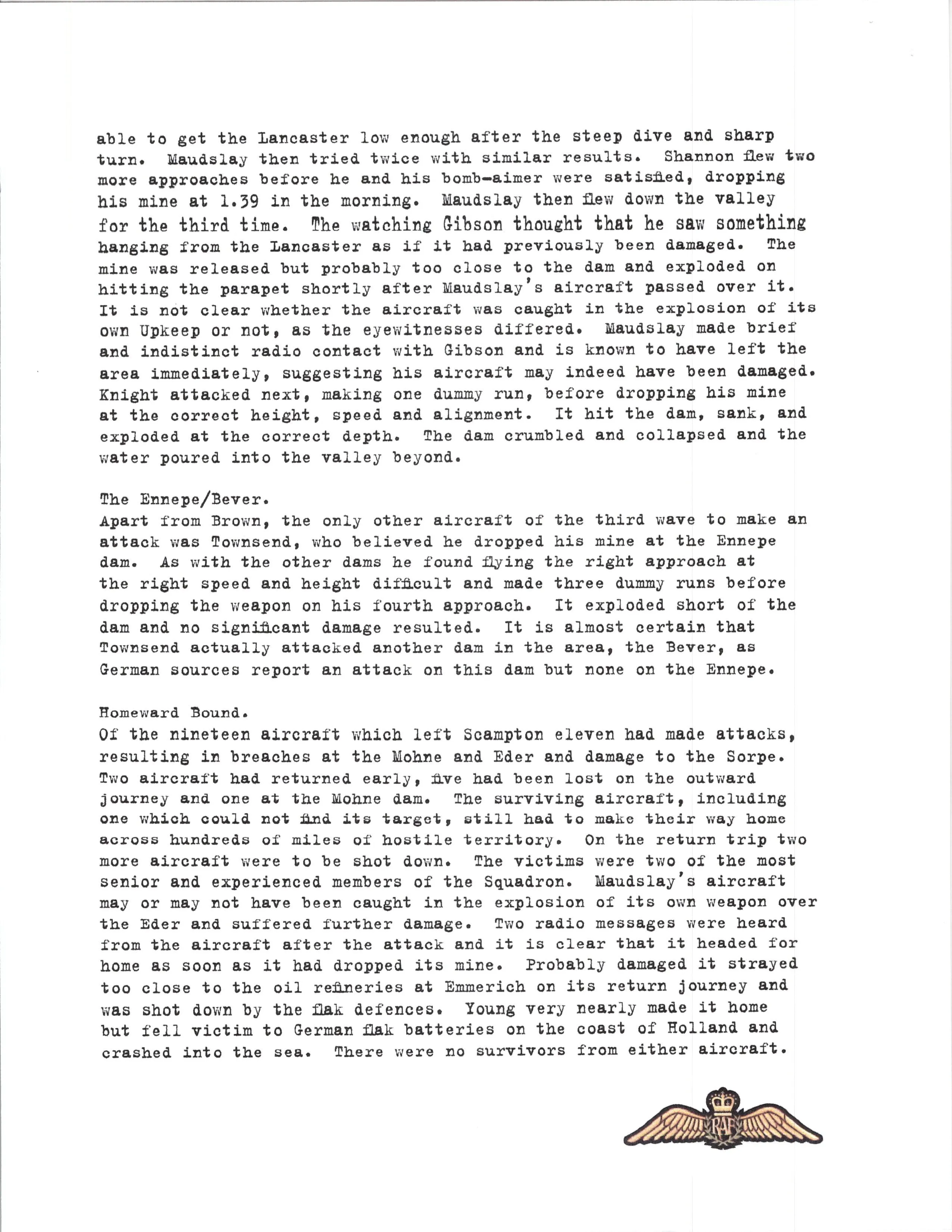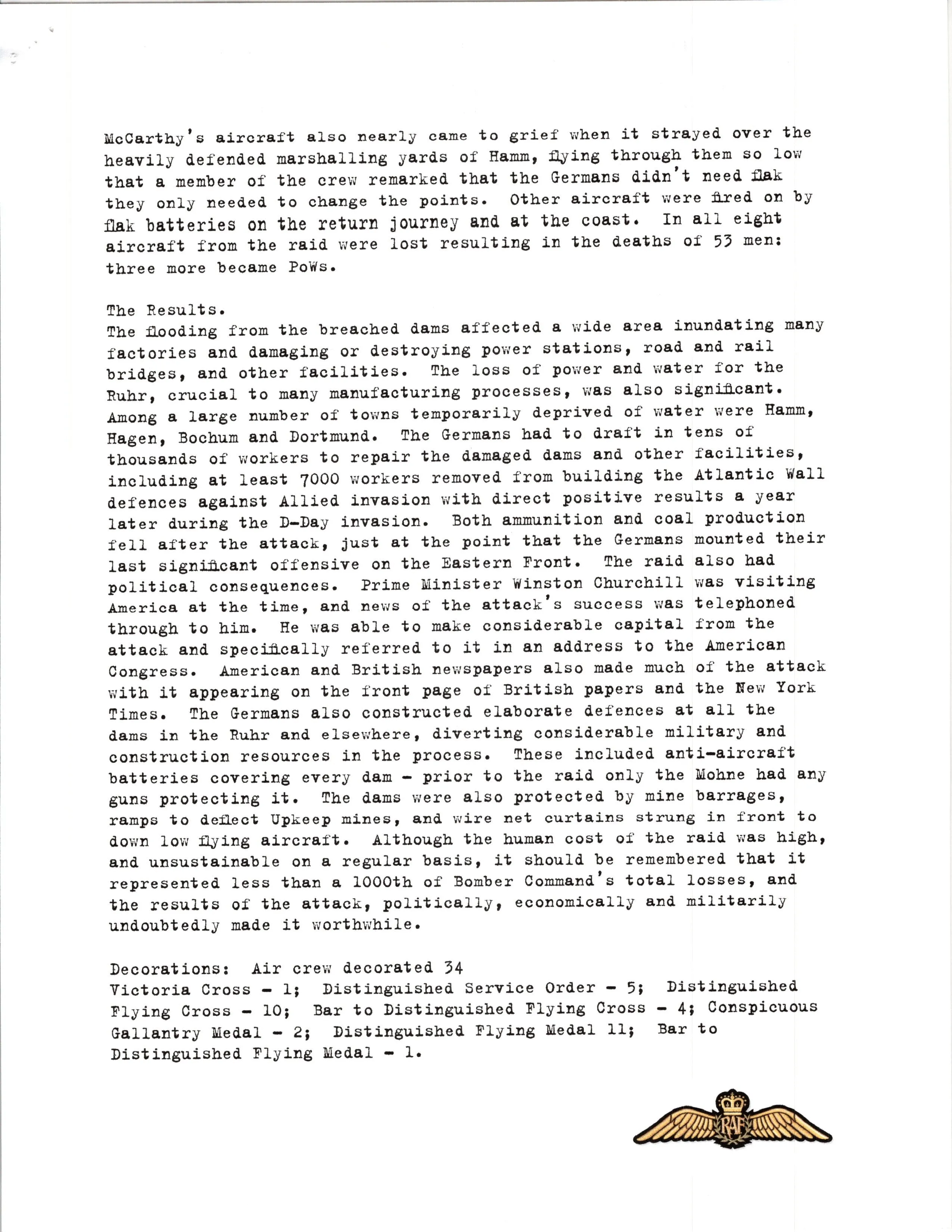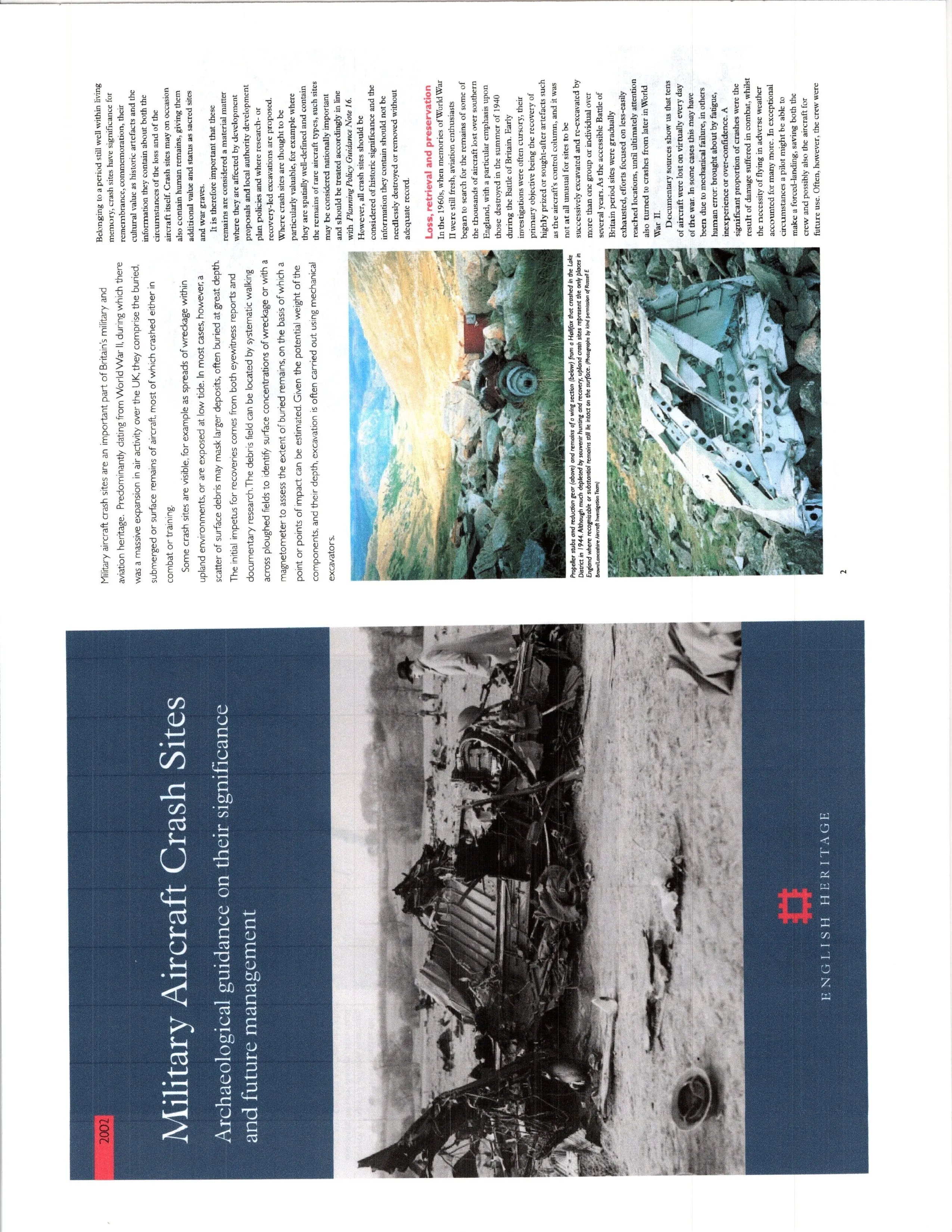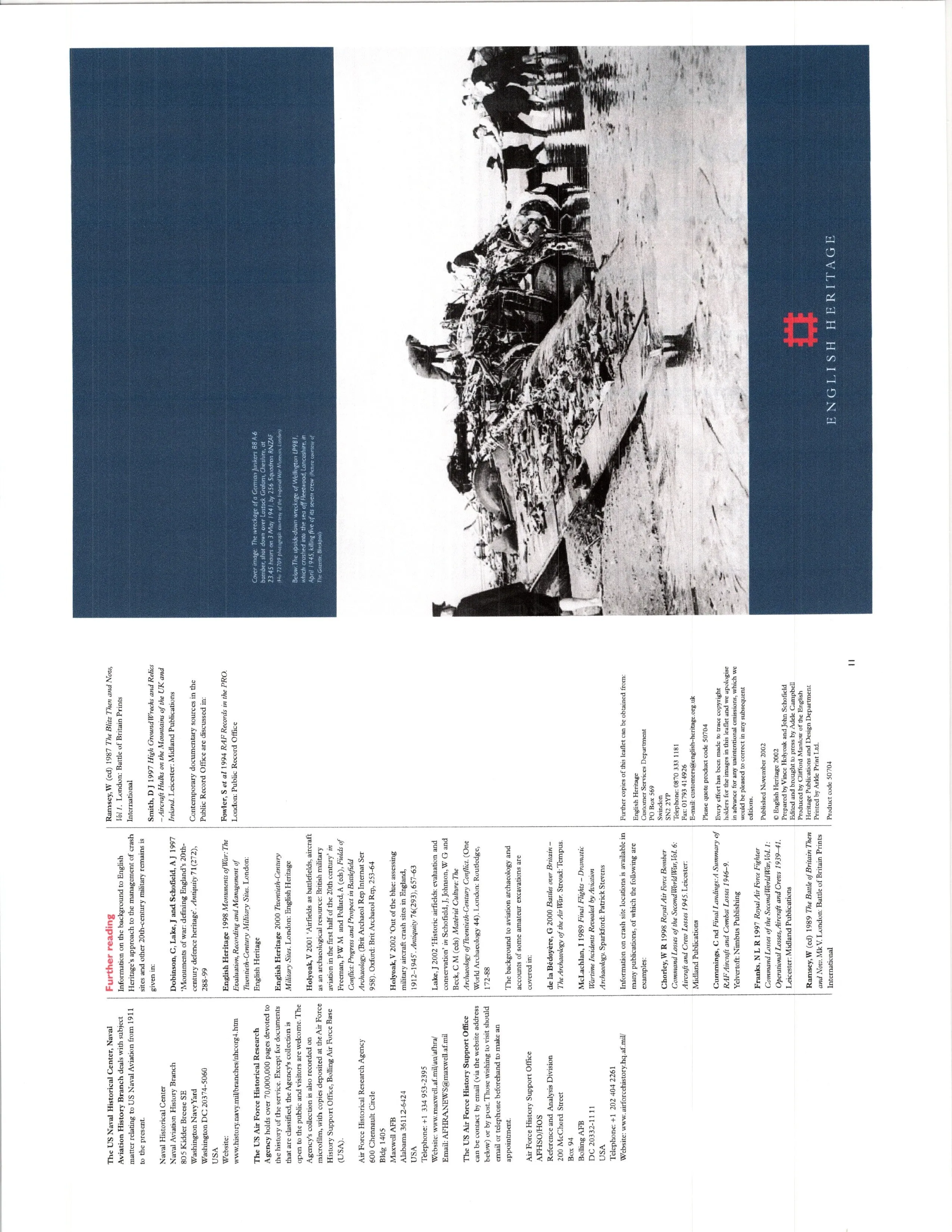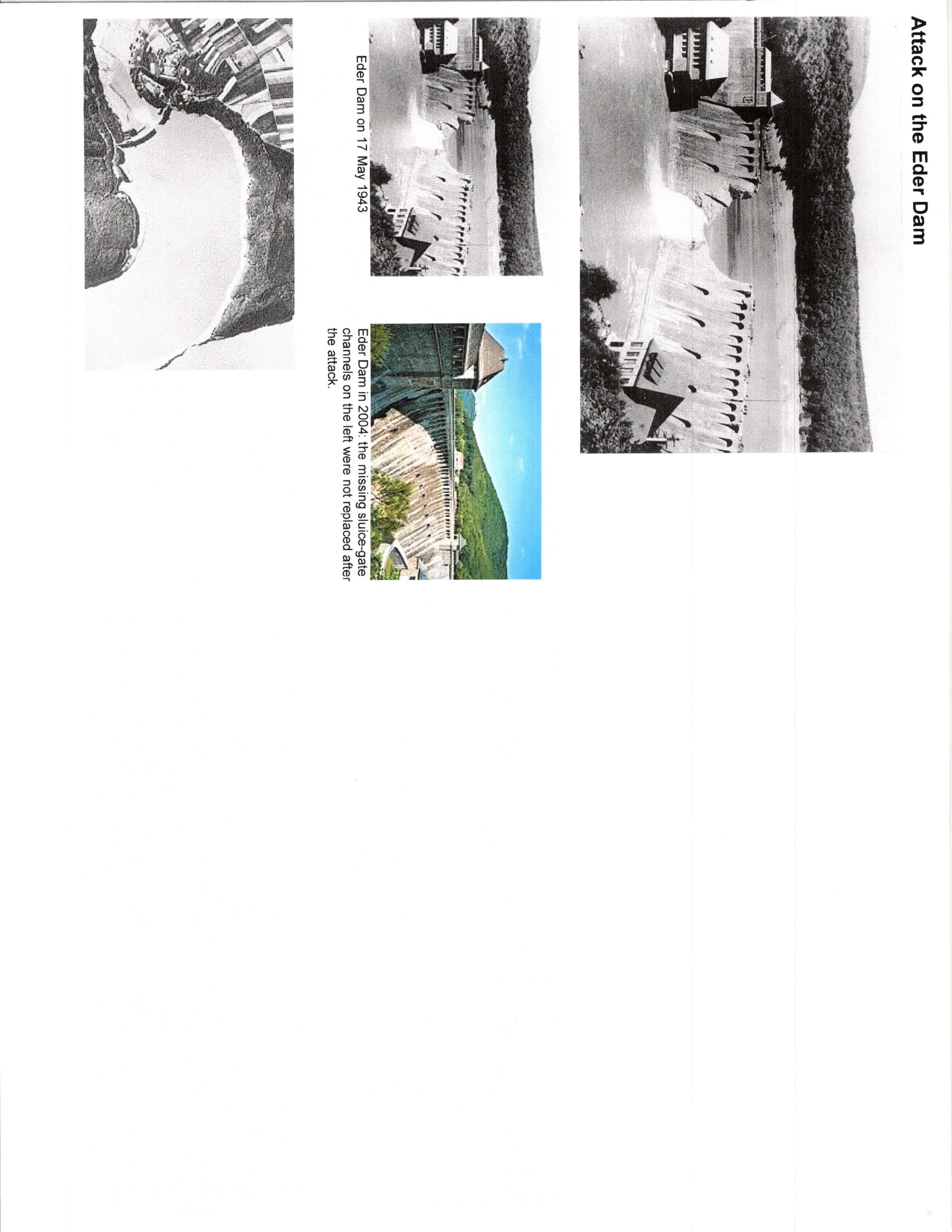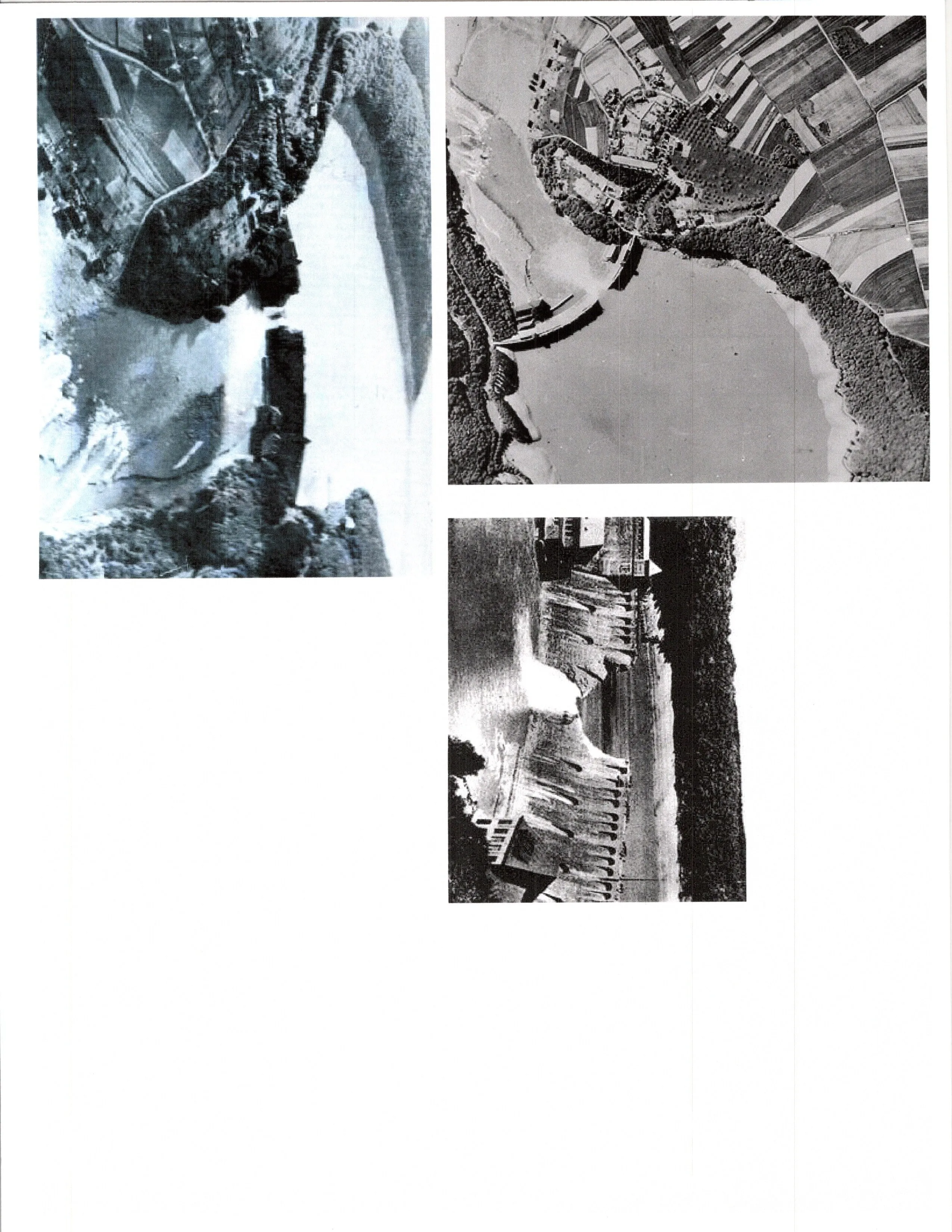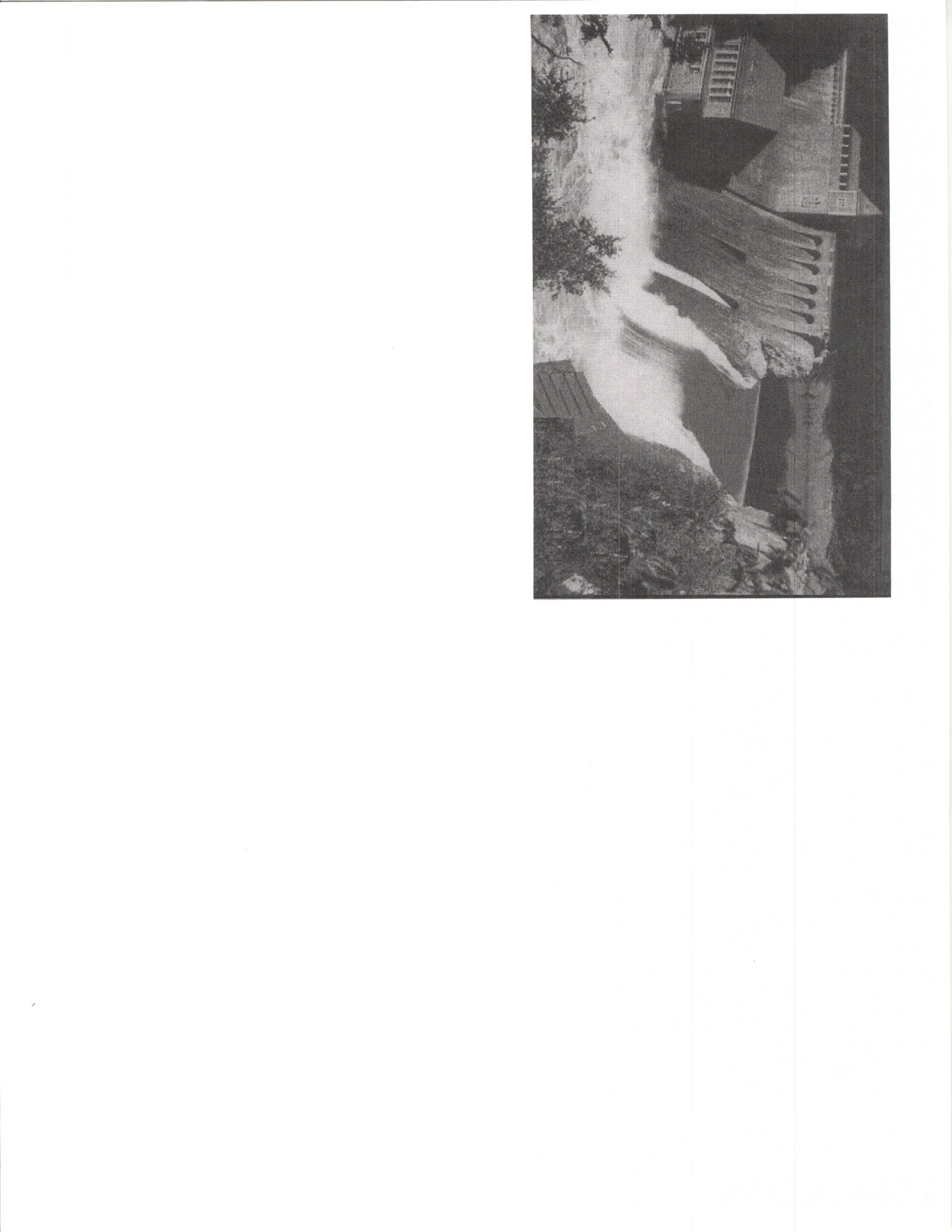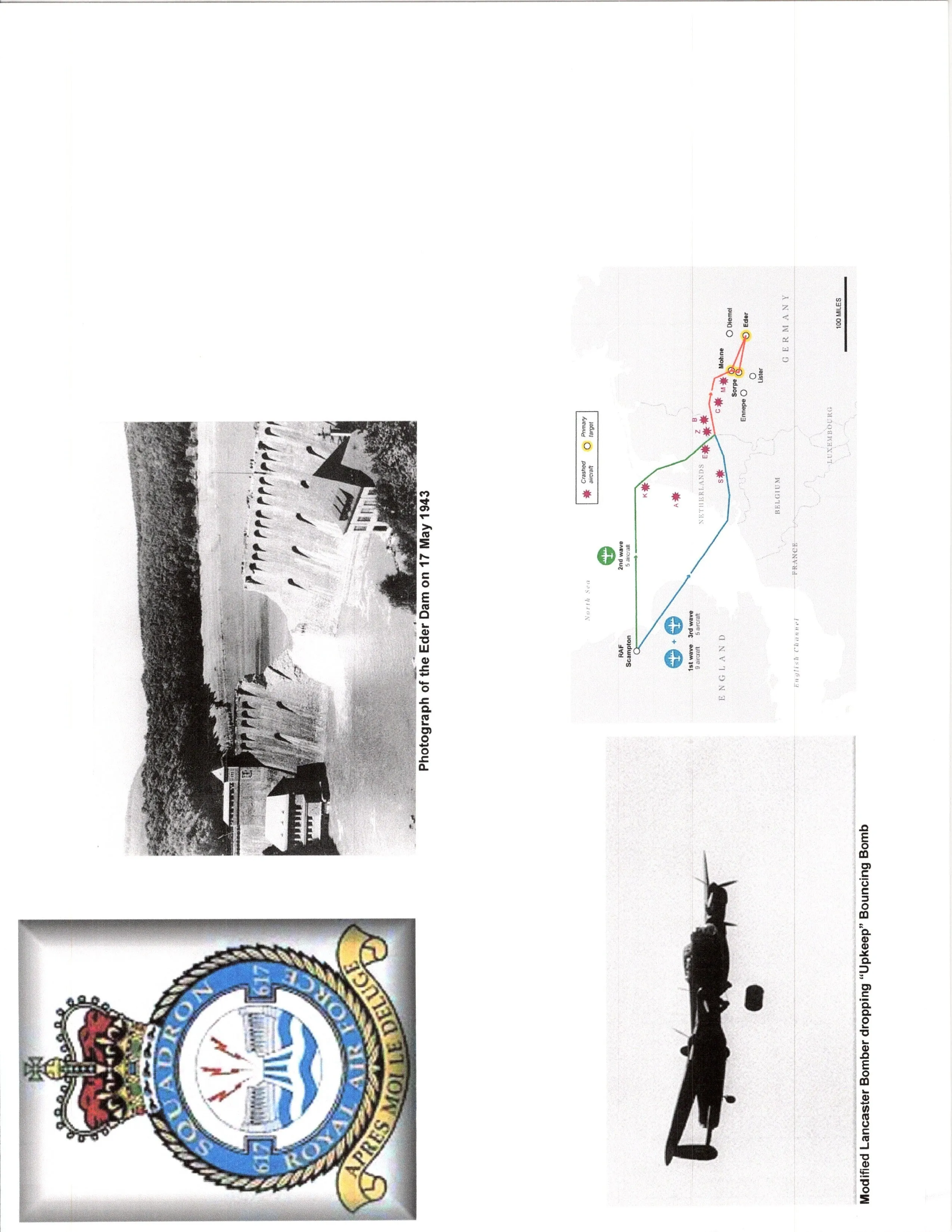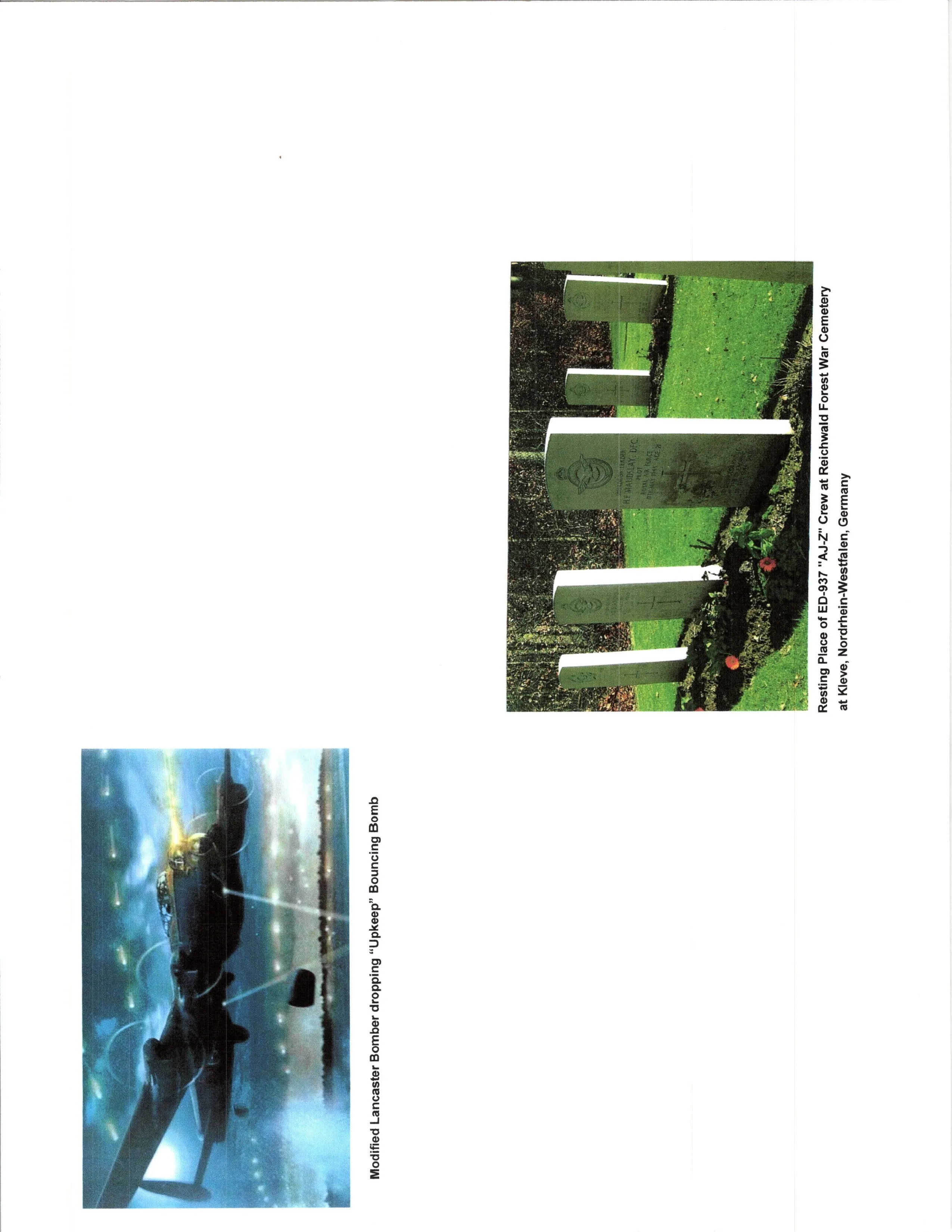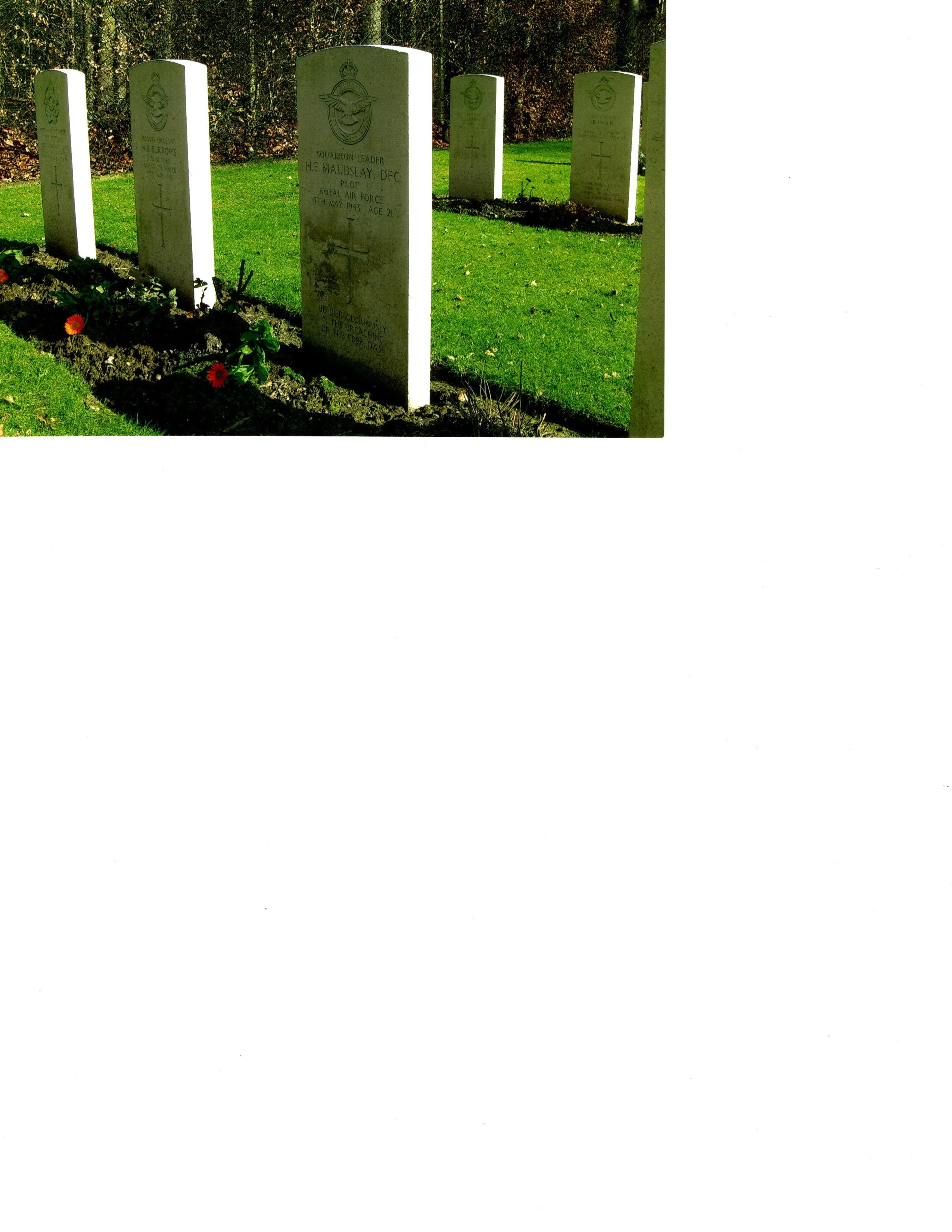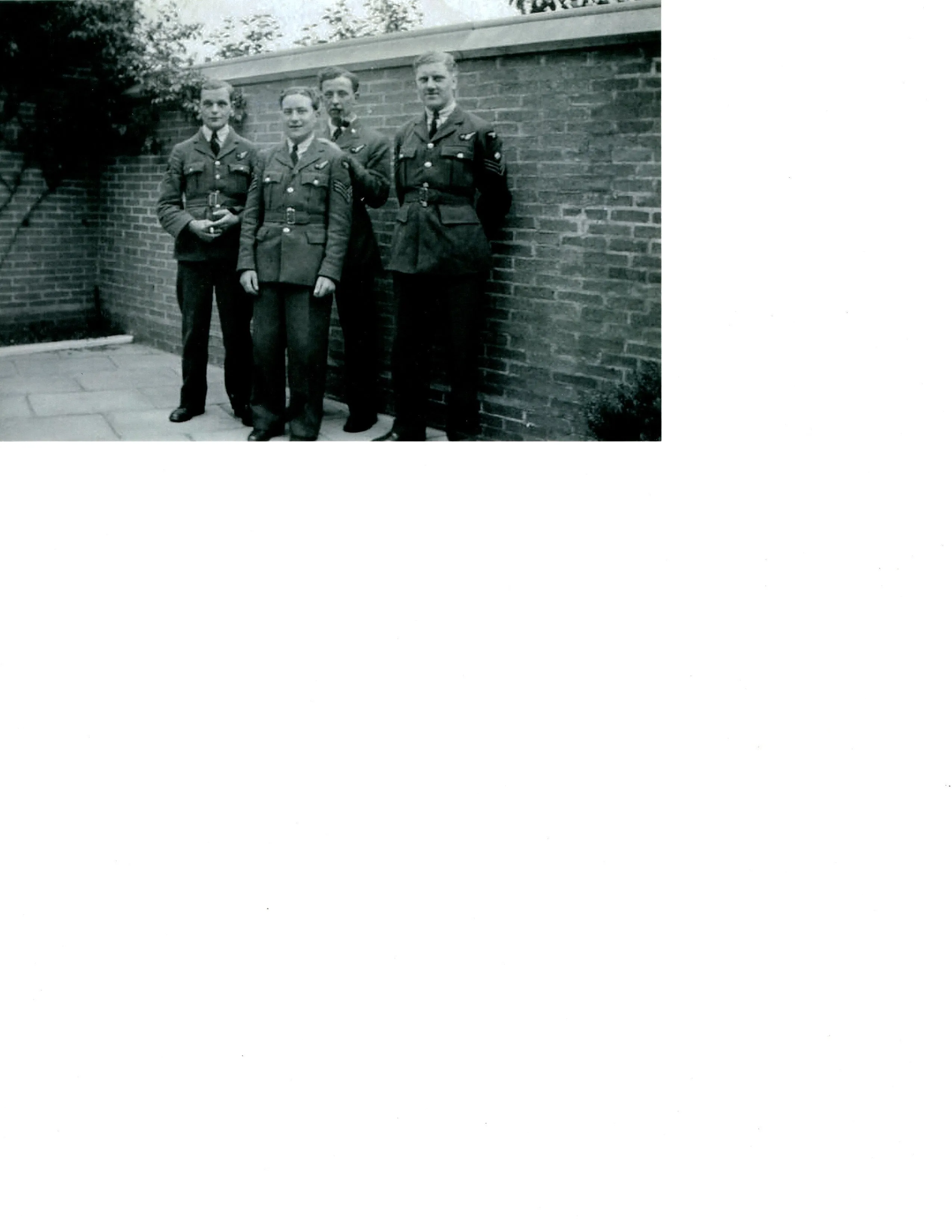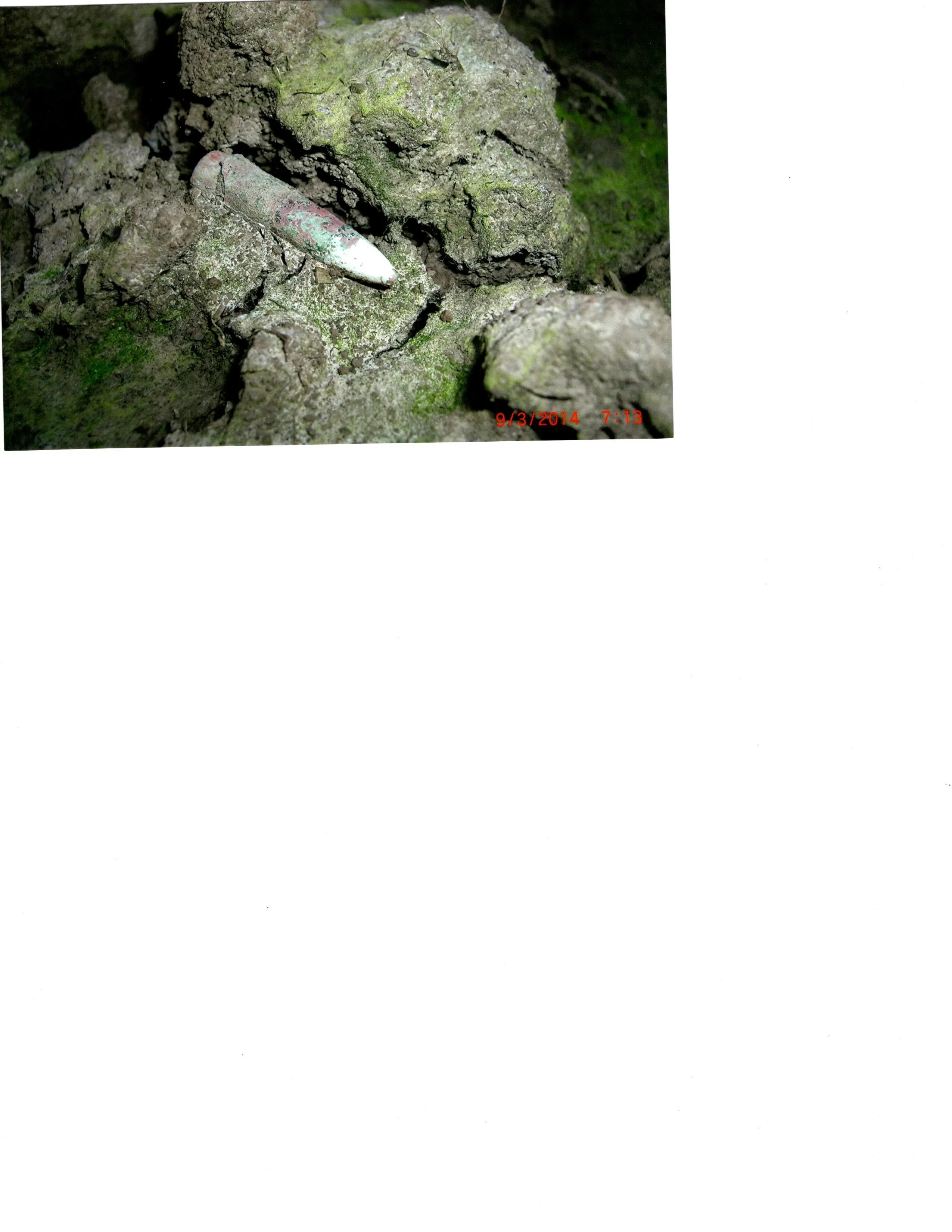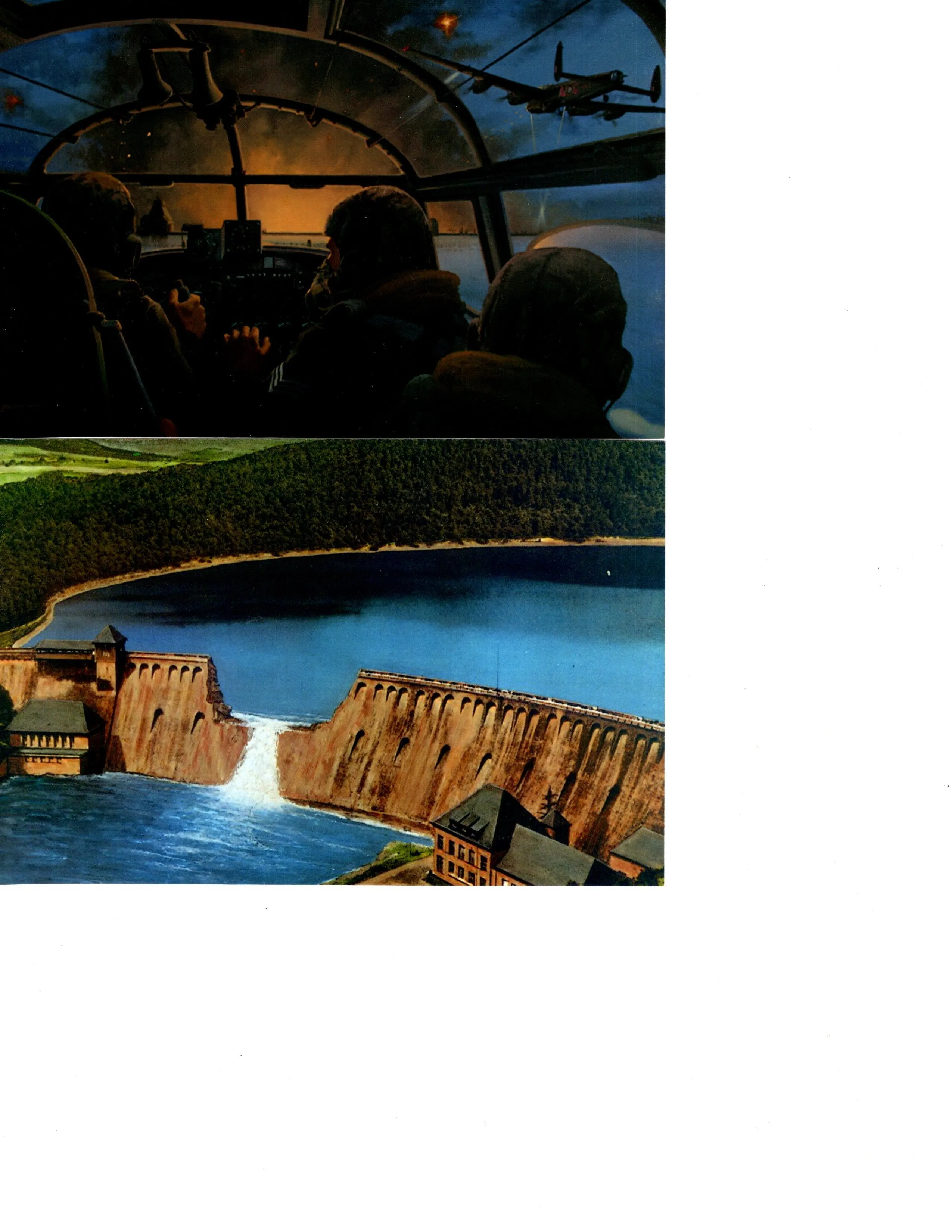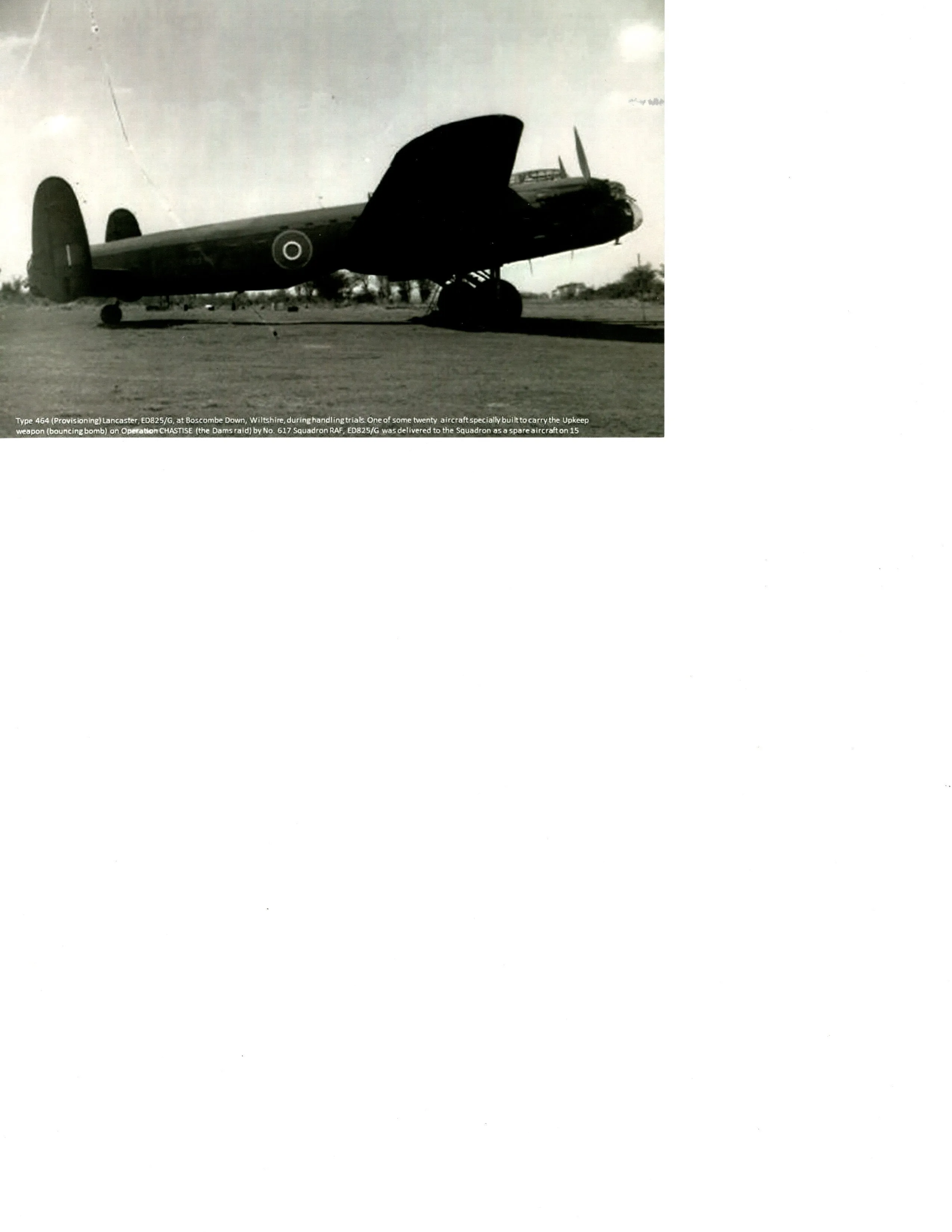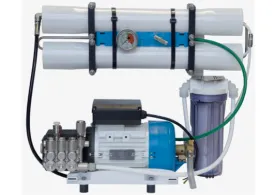Original Items: One-of-a-kind set. Operation Chastise was an attack on German dams carried out on 16–17 May 1943 by Royal Air Force No. 617 Squadron, later called the Dam Busters, using a purpose-built "bouncing bomb" developed by Barnes Wallis, nicknamed "Upkeep". These bombs were designed to spin when dropped, bounce over torpedo nets, and then sink down to the bottom of the dam before exploding.
The Möhne and Edersee dams were breached, causing catastrophic flooding of the Ruhr valley and of villages in the Eder valley; the Sorpe Dam sustained only minor damage. Two hydroelectric power stations were destroyed and several more damaged. Factories and mines were also damaged and destroyed. An estimated 1,600 civilians – about 600 Germans and 1,000 mainly Soviet forced labourers – died. Despite rapid repairs by the Germans, production did not return to normal until September.
The first trials were at Chesil Beach in January 1943, which demonstrated that a bomb of sufficient size could be carried by an Avro Lancaster, rather than waiting for a larger bomber such as the Windsor to come into service. Avro Chief Designer Roy Chadwick adapted the Lancaster to remove the mid-upper (dorsal) gun turret to reduce drag, increase speed and save fuel, bearing in mind that a large, ungainly weapon would be suspended below the fuselage. He also worked out the design and installation of controls and gear for the carriage and release of the bomb in conjunction with Barnes Wallis. Thus, the Lancaster "Dambuster" was born.
A major problem for the operation determining the aircraft's altitude, as the barometric altimeters then in use lacked sufficient accuracy. Two spotlights were mounted, one under the aircraft's nose and the other under the fuselage, so that at the correct height their light beams would converge on the surface of the water. The crews practised at the Eyebrook Reservoir, near Uppingham, Rutland; Abberton Reservoir near Colchester; Derwent Reservoir; and Fleet Lagoon on Chesil Beach. Wallis's bomb itself was first tested at the Elan Valley Reservoirs.
The operation took place, but unfortunately it was not entirely successful, mostly due to the extreme difficulty of the mission. There is a nice paragraph inside the frame describing the drop by Dambuster ED-937 and what happened:
Fragments from Dambuster ED-937 "AJ-Z" piloted by Squadron Leader H.E. Maudslay. He released the Upkeep bomb during his second approach on the Eder Dam on 17 May 1943. The weapon was released slightly too late, hitting the crest of the dam and exploding right behind Maudslay's Lancaster. He had struggled away with a damaged aircraft and started on the return journey, but was shot down by flak at 02:36 at Emmerich. Maudslay and all of his crew died.
Below this are the names and pictures of the 7 crew members who perished, including Maudslay, and under that an illustration of the aircraft, call sign "Z" from the first wave. There are various other printed pictures related to the operation, as well as a very nice embroidered bullion 617th Squadron badge. There is also a picture of the graves of the crew, who rest now in Germany.
Interspersed with these images are fragments recovered from the crash site, most of which are aluminum. They are attached to the fabric backing inside. The case itself measures 16 3/4" x 12 3/4" x 2 3/4", and has is glass glazed. The frame looks to be wood, though it could be composite or metal.
Included with the case are some printed photographs, as well as research material concerning the operation and the plane itself. There is information about the crash site, which can still be visited today. Included is a CD-R with information on it, probably a soft copy of the printed material.
A fantastic set from a daring and ultimately successful operation to damage NSDAP Germany's infrastructure. Ready to display!




